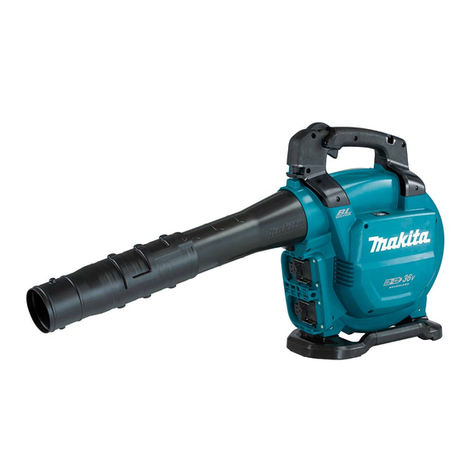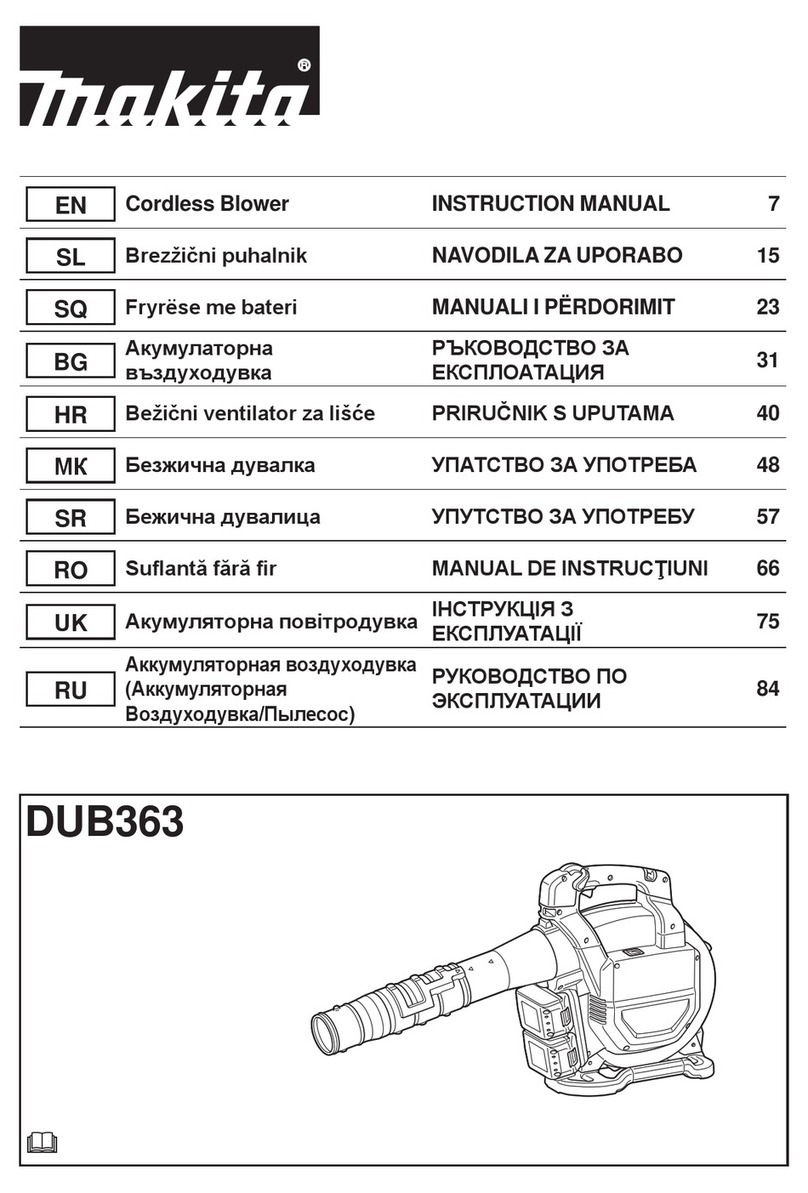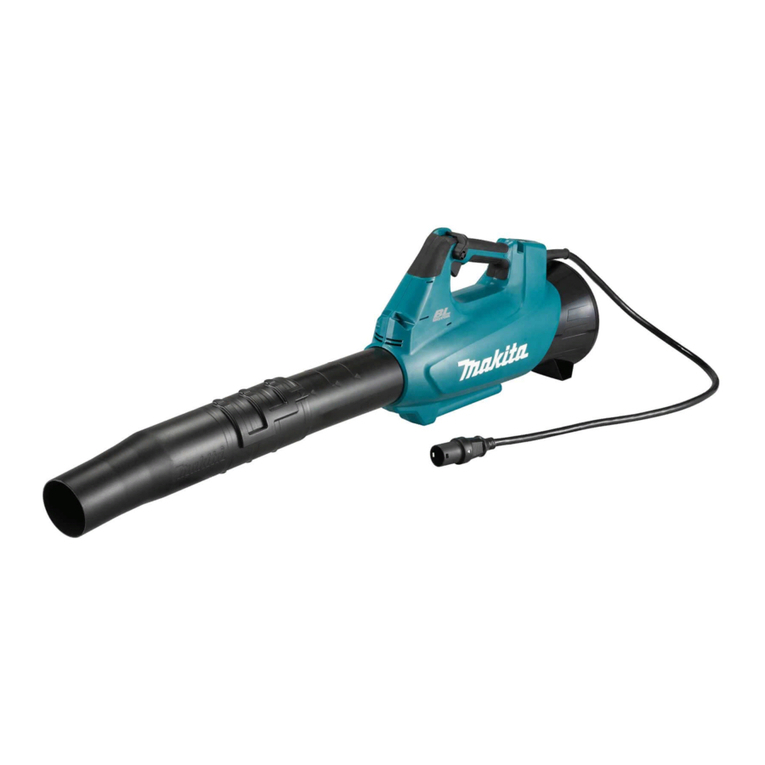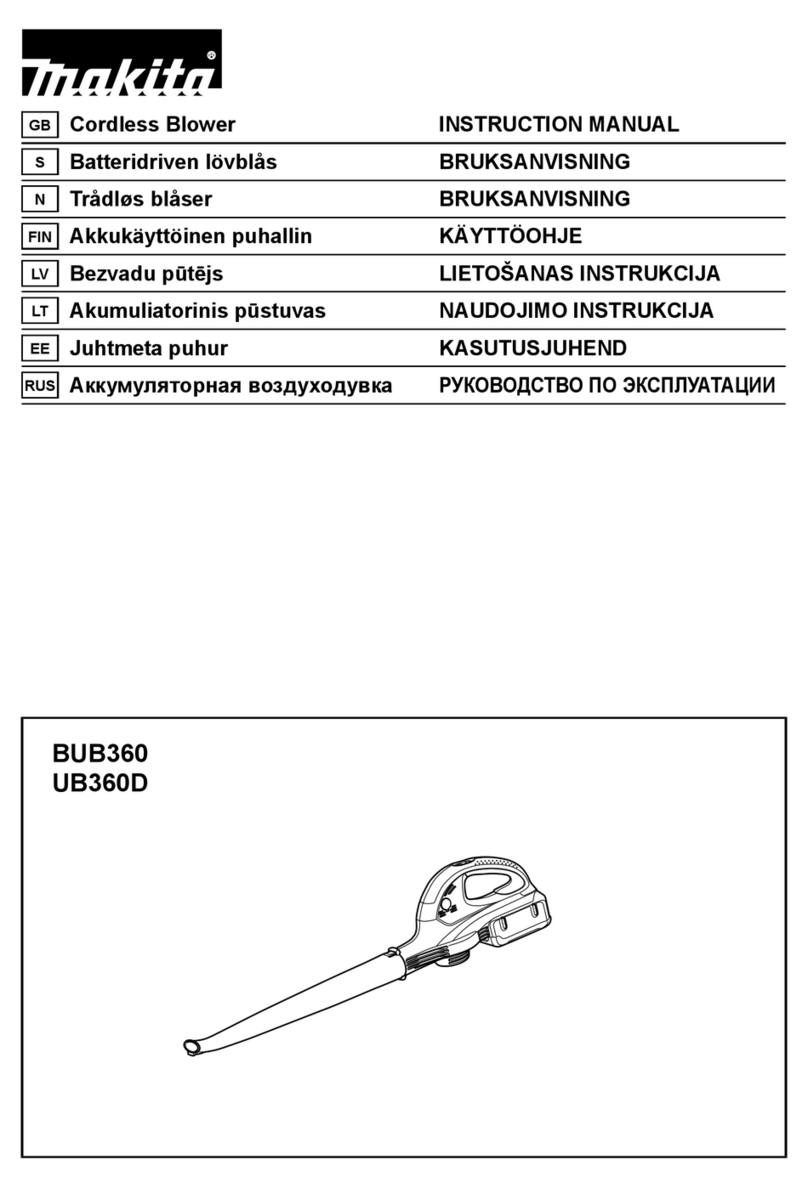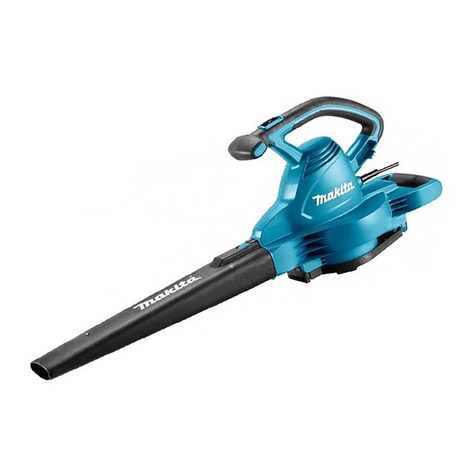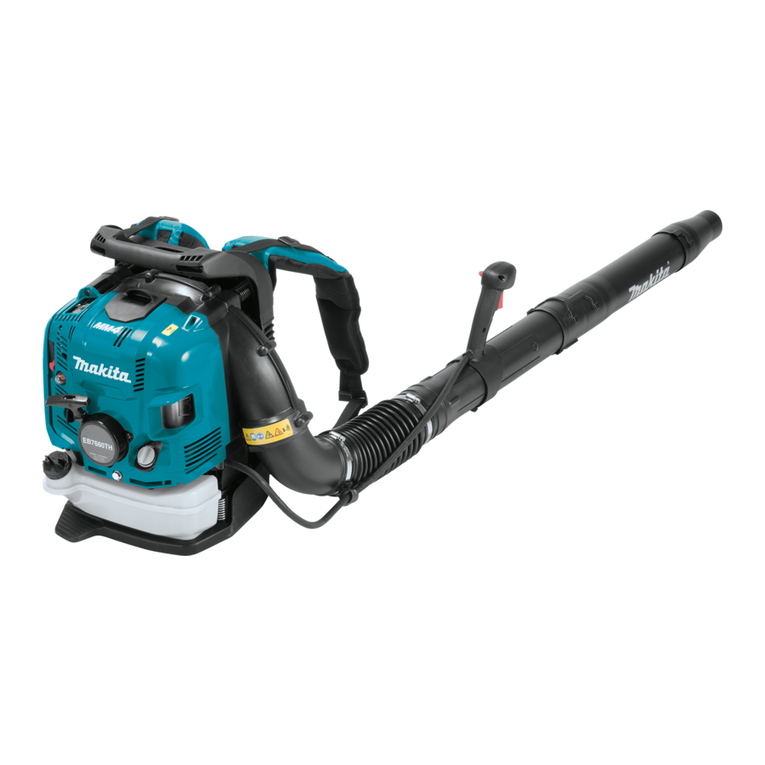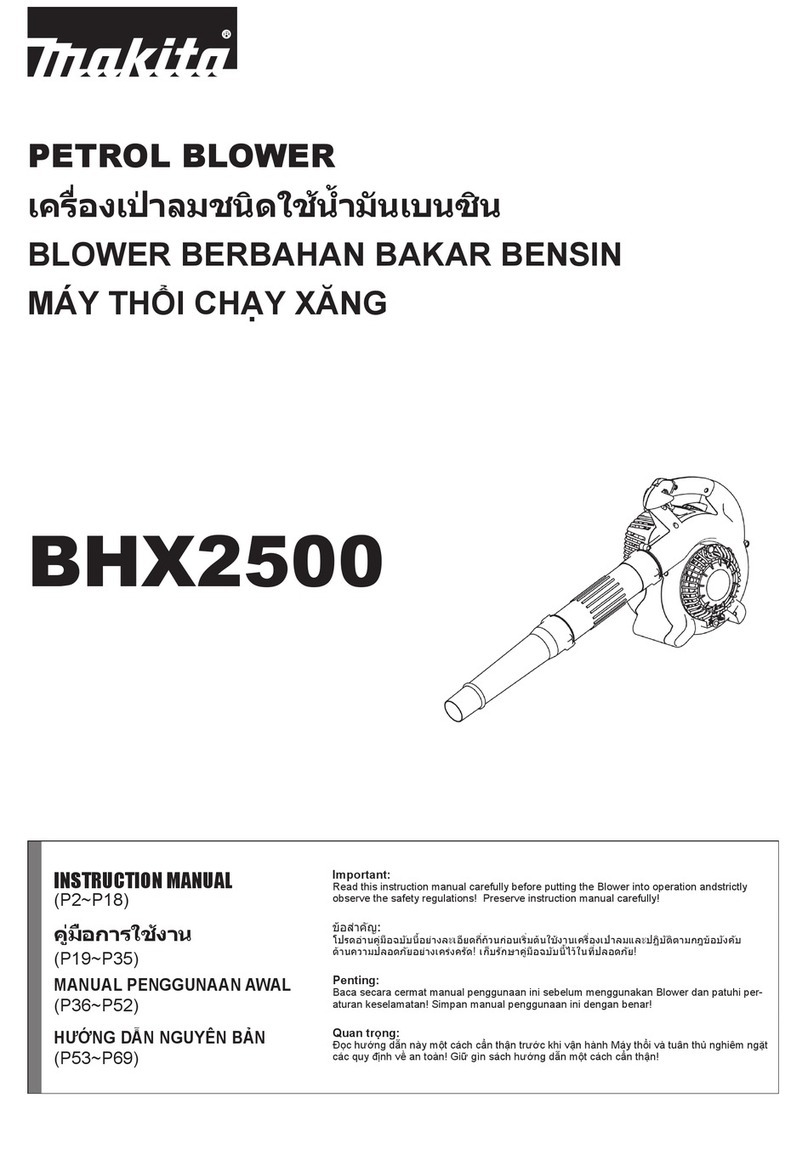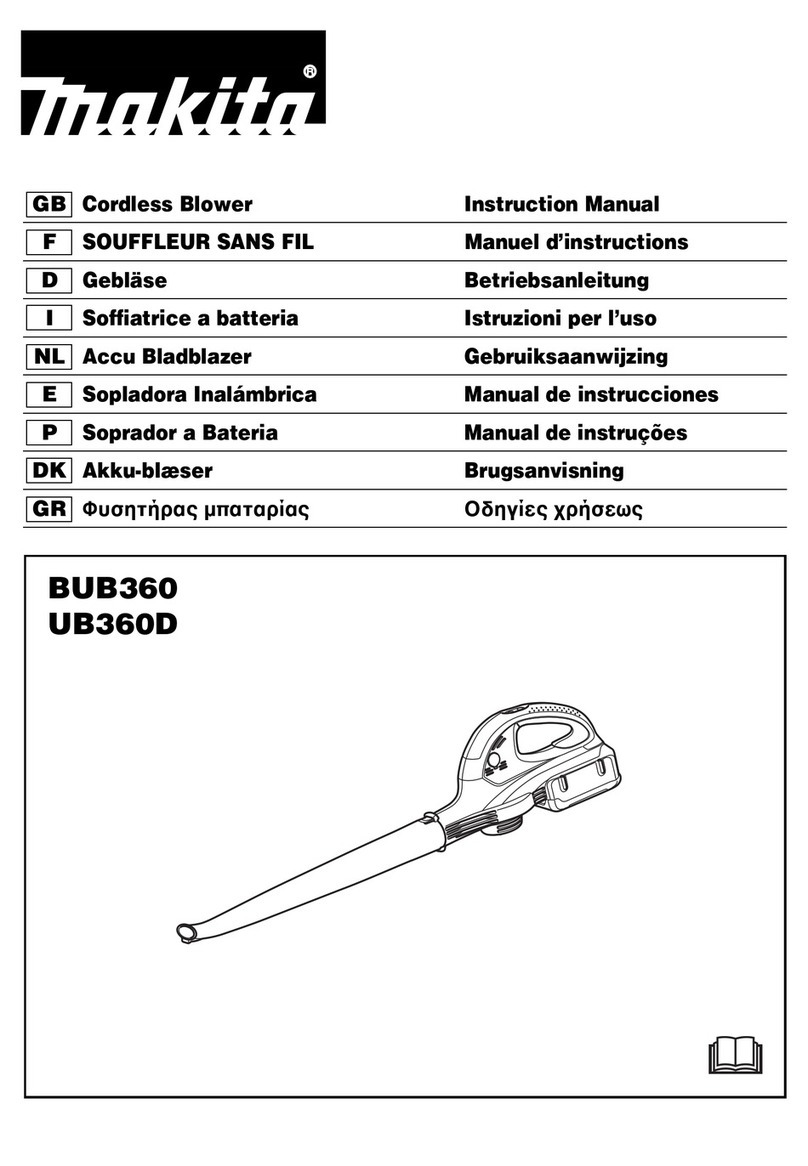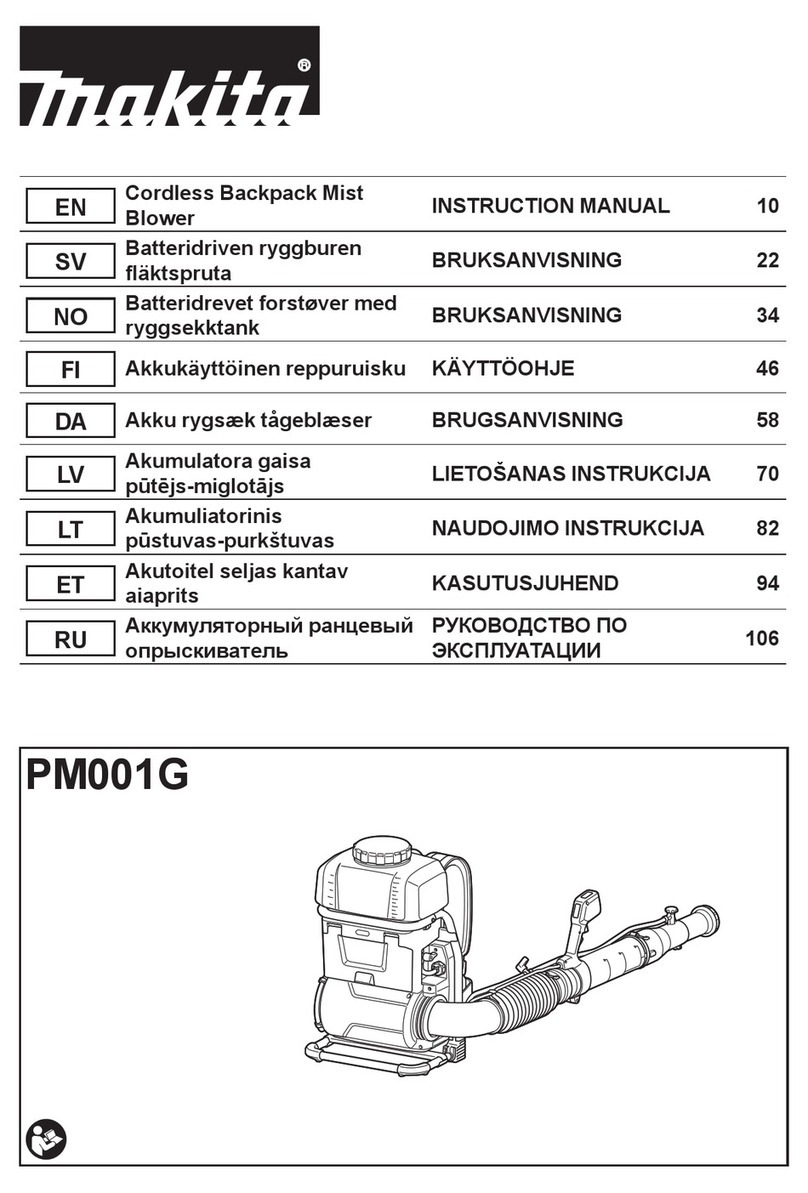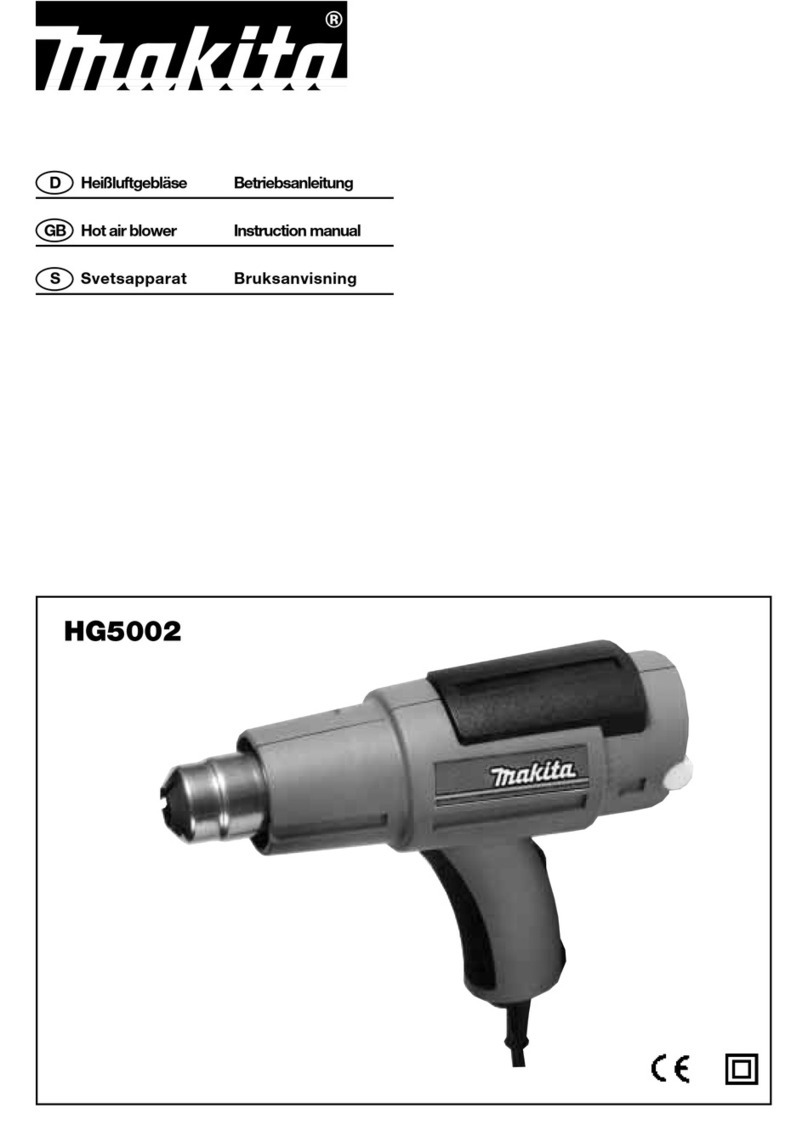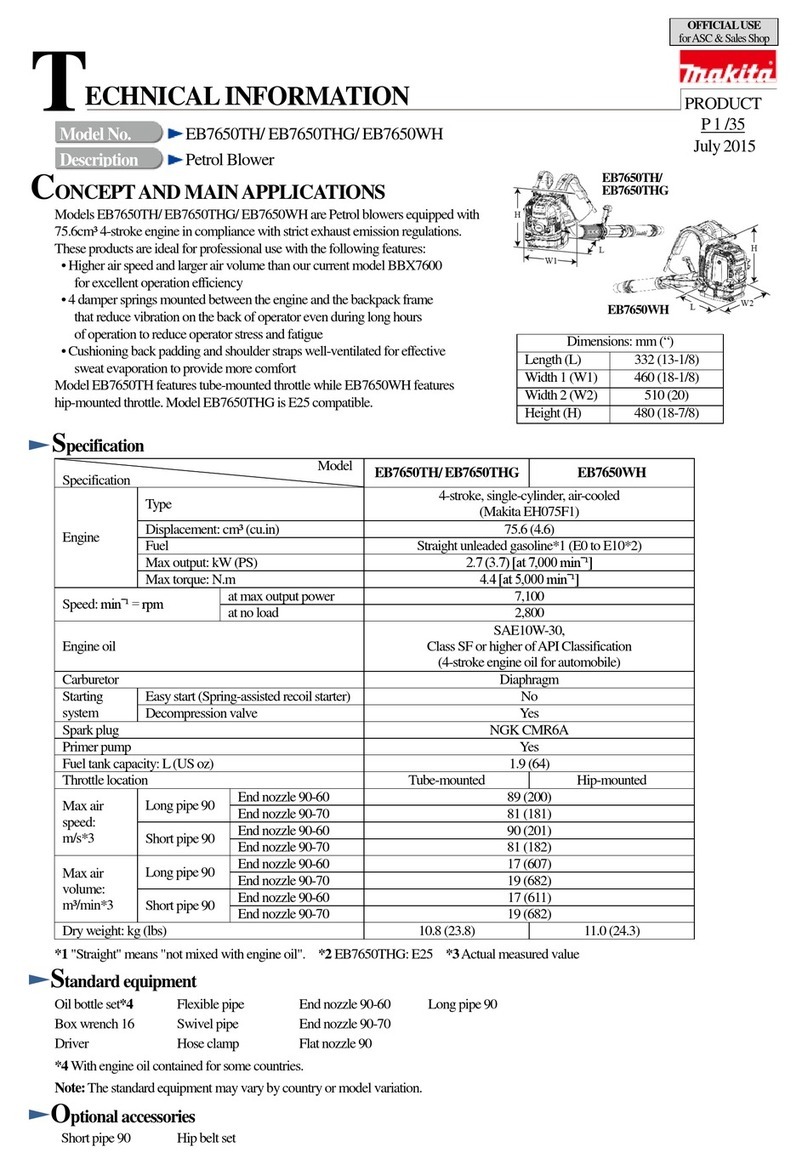
3
SAFETY INSTRUCTIONS
General Instructions
• To ensure correct and safe operation, the user must read,
understand and follow this instruction manual to assure familiarity
with the handling of the blower (1). Users insufficiently informed
will risk danger to themselves as well as others due to improper
handling.
• It is recommended only to loan the blower to people who have
proven to be experienced with blowers.
• Always hand over the instruction manual.
• First-time users should ask the dealer for basic instructions to
familiarize oneself with the handling of a blower.
• Children and young persons aged under 18 years must not be
allowed to operate the blower. Persons over the age of 16 years
may however use the tool for the purpose of being trained only
while under the direct supervision of a qualified trainer.
• Use blowers with the utmost care and attention.
• Operate the blower only if you are in good physical condition.
• Perform all work conscientiously and carefully. The user has to
accept responsibility for others.
• Never use the blower while under the influence of alcohol or drugs
(2).
• Do not use the unit when you are tired.
• Save these instructions for future referral.
Personal Protective Equipment
• The clothing worn should be functional and appropriate, I. e. It
should be tight-fitting but not cause a hinderance. Do not wear
jewelry, clothing or long hair which could be drawn into the air
intake.
• In order to avoid head-, eye-, hand- or foot injuries as well as to
protect your hearing the following protective equipment and
protective clothing must be used during operation of the blower.
Pay particular attention to the following regulations
• Clothing must be sturdy and snug-fitting, but allow complete
freedom of movement. Avoid loose-fitting jackets, flared or cuffed
pants, scarfs, unconfined long hair or anything that could be drawn
into the air intake. Wear overalls or long pants to protect your legs.
Do not wear shorts. (4)
• Blower noise may damage your hearing. Wear sound barriers (ear
plugs or ear mufflers) to protect your hearing. Continual and
regular users should have their hearing checked regularly. (3)
• Use of gloves when working with the blower is recommended.
Good footing is most important. Wear sturdy shoes with nonslip
soles. (4)
• Proper eye protection is a must. Even though the discharge is
directed away from the operator, ricochets and bouncebacks can
occur during blower operation. (3)
• Never operate a blower unless wearing goggles or properly fitted
safety glasses with adequate top and side protection which comply
with ANSI Z 87. 1 (or your applicable national standard).
Starting up the blower
• Please make sure that there are no children or other people within a
working range of 15 meters (5), also pay attention to any animals in
the working vicinity. Never use the blower in urban areas.
•Before operating, always check that the blower is safe for
operation:
Check the security of the throttle lever. The throttle lever should be
checked for smooth and easy action. Check for proper functioning
of the throttle lever lock. Check for clean and dry handles and test
the function of the l-O switch. Keep handles free of oil and fuel.
(1)
(2)
(3)
(4)
(5)
15meters
3
